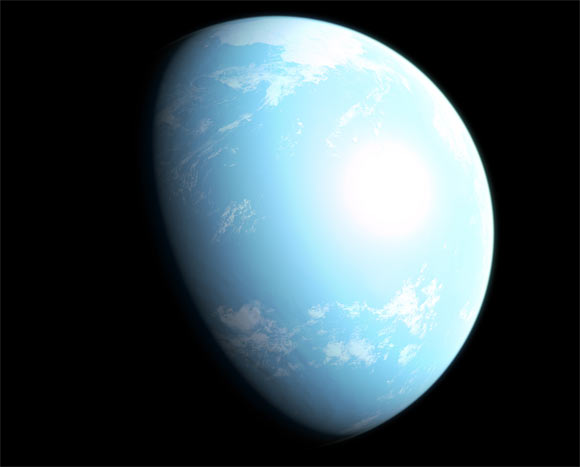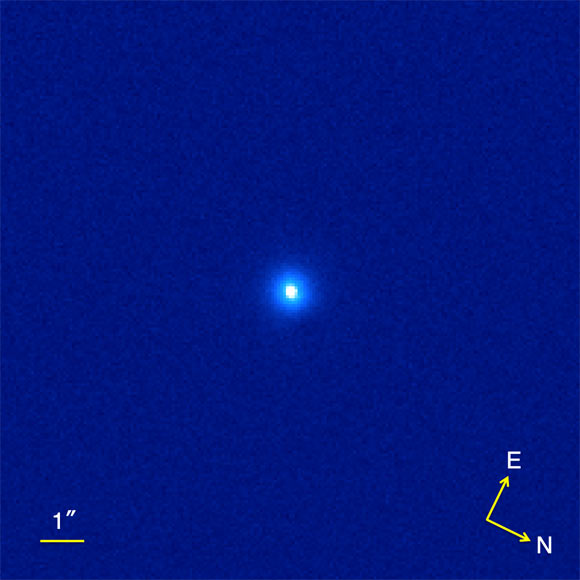>Three Small Planets Orbit Nearby Red Dwarf Star GJ 357 | Astronomy – Sci-News.com
Using data from NASA’s Transiting Exoplanet Survey Satellite (TESS) and several ground-based telescopes, astronomers have discovered three small exoplanets orbiting a bright red dwarf star called GJ 357. The outermost planet, GJ 357d, is especially intriguing to scientists because it is located in the star’s habitable zone and receives as much energy from its star as Mars does from the Sun.

Illustration depicting one interpretation of the exoplanet GJ 357d. Image credit: Chris Smith / NASA’s Goddard Space Flight Center.
GJ 357, also known as Gliese 357, TOI-562 and TIC 413248763, is an M-type dwarf about one-third the Sun’s mass and size and about 40% cooler. It is located approximately 31 light-years away in the constellation Hydra.
In February 2019, TESS caught GJ 357 dimming slightly every 3.9 days, revealing the presence of a transiting exoplanet.
Named GJ 357b, the planet is about 22% larger than Earth. It orbits 11 times closer to its star than Mercury does our Sun. This gives it an equilibrium temperature of around 490 degrees Fahrenheit (254 degrees Celsius).
“We describe GJ 357b as a ‘hot Earth.’ Although it cannot host life, it is noteworthy as the third-nearest transiting exoplanet known to date and one of the best rocky planets we have for measuring the composition of any atmosphere it may possess,” said Dr. Enric Pallé, a researcher at the Instituto de Astrofísica de Canarias and the Universidad de La Laguna.
But while Dr. Pallé and colleagues were looking at ground-based data to confirm the existence of the hot Earth, they uncovered two additional worlds: GJ 357c and d.

This image, taken by the Subaru 8.2-m telescope on April 18, 2019, shows the M2.5V star GJ 357. Image credit: Luque et al, doi: 10.1051/0004-6361/201935801.
GJ 357c has a mass at least 3.4 times Earth’s, orbits the star every 9.1 days at a distance a bit more than twice that of GJ 357b. TESS did not observe transits from this planet, which suggests its orbit is slightly tilted — perhaps by less than 1 degree — relative to the hot Earth’s orbit, so it never passes across the star from our perspective.
GJ 357d is 6.1 times as massive as Earth and orbits the star every 55.7 days at a range about 20% of Earth’s distance from the Sun. The planet’s size and composition are unknown, but a rocky world with this mass would range from about one to two times Earth’s size.
This planet is located within the outer edge of its star’s habitable zone, where it receives about the same amount of stellar energy from its star as Mars does from the Sun.
“If GJ 357d has a dense atmosphere, which will take future studies to determine, it could trap enough heat to warm the planet and allow liquid water on its surface,” said Dr. Diana Kossakowski, an astronomer at the Max Planck Institute for Astronomy.
“Without an atmosphere, it has an equilibrium temperature of minus 64 degrees Fahrenheit (minus 53 degrees Celsius), which would make the planet seem more glacial than habitable.”
“In a way, these planets were hiding in measurements made at numerous observatories over many years,” said first author Rafael Luque, a doctoral student at the Instituto de Astrofísica de Canarias and the Universidad de La Laguna.
“It took TESS to point us to an interesting star where we could uncover them.”
The team’s paper was published in the journal Astronomy & Astrophysics (arXiv.org preprint).
_____
R. Luque et al. Planetary system around the nearby M dwarf GJ 357 including a transiting, hot, Earth-sized planet optimal for atmospheric characterization. A&A, in press; doi: 10.1051/0004-6361/201935801





